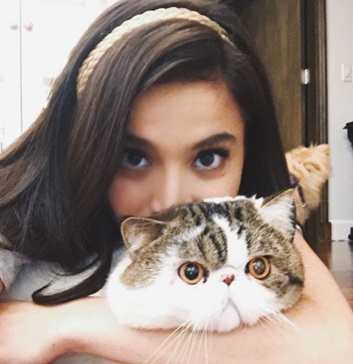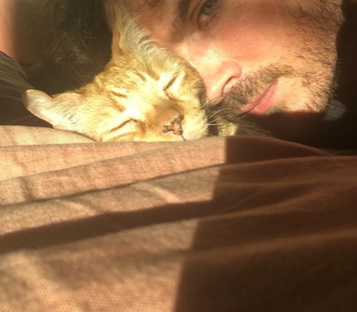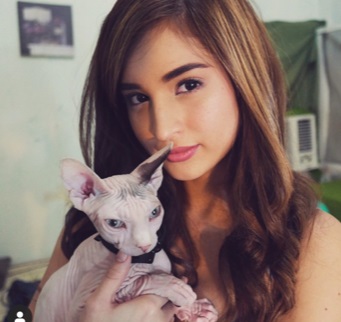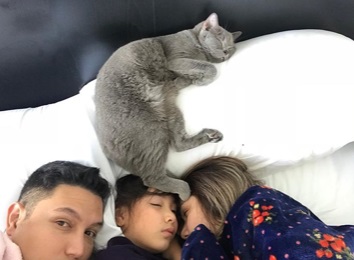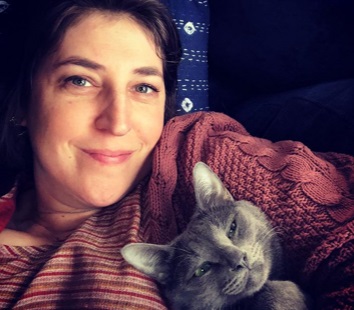No other creature in the civilized world is more misunderstood than the domesticated cat.
Cats are as mysterious as their owners who behave like courtiers fawning over a queen. There are good reasons for that adoration—cats are just as sweet and affectionate as dogs, but they just don’t show it the way dogs do.
Unfortunately, for our feline friends, their reputation has preceded them. Here are some of the myths surrounding these lovely creatures.
1. Cats always land on their feet.
This is not always true. Cats do have a “righting reflex,” a built-in balancing system that helps orient themselves to land on their feet.
“In addition, there is a vestibular apparatus inside a cat’s ear used for balance and orientation. This enables cats to quickly figure out which way is up and rotate their head immediately so their bodies can follow,” Dr. Jennifer Freeman, a veterinarian at PetSmart, told Insider.
This reflex and apparatus are not always effective, especially if they fall from a high place.
2. Cats are not affectionate.
Just like people, not all cats seek attention or love to cuddle, but many cats do.
Cats, just like dogs, require a lot of love, too, said New York Times bestselling author and Animal Planet TV host Jackson Galaxy. This widespread myth endured for years because people look at cats through their “dog-colored glasses,” constantly comparing the behavior of cats and dogs.
“Cats are snuggly, but in their way. They don’t bark or cry at you or beg for your attention the way dogs do,” Galaxy said.
3. You can’t train a cat.
Sure, cats aren’t the first animal to pop in your head when you think of pets performing tricks. But as some cat “pawrents” have already discovered, cats can be trained.
“[Training a cat] differs from training a dog because cats will not learn from discipline and will run away from any punishment,” Freeman said. “I recommend short training sessions with a clicker and rewarding your cat for small lessons learned. [Over time], you can replace the clicker sound by saying ‘good,’ and they will associate it with a reward.”
Panther the Cat, one of the most popular Instagram cats in the Philippines, responds to “come here,” “sit,” “give me five,” “stand up,” and even “high five.” His owner, photographer Carmen Goetz, told Lifestyle that the cat responds well to treats so that made him very trainable.
4. Declawing a cat is harmless.
This procedure can be quite harmful to your pet, said Galaxy.“It has great lasting psychological and physical implications for cats as they go on in life. It is a completely unnecessary surgery,” he said.
The Humane Society Organization reported that declawing could make a cat less likely to use the litter box or more likely to resort to biting. Cats usually use their claws to bury their waste, the reason they learn to use the litter box so quickly. Digging, whether in a litter or any surface, is painful for a declawed cat. This will make the cat associate the pain with the litter box.
Declawing is a painful procedure intended for the convenience of humans. If their claws get a little too sharp, trim them instead of removing them. If you’re lucky, your cat might even be the kind that trims their claws with their teeth.
5. Cats can see in the dark.
They can see in the dark if there’s the slightest bit of light.
“Their eyes gather that light in, and they intensify that light in the back of their eye in a membrane called the tapetum,” Galaxy said. A cat’s eyes are designed to help them hunt prey in low-light atmospheres. “They do their best work, not in total darkness, but pretty close,” he added.
6. Cats don’t require regular checkups; they have nine lives.
Of course, cats only have one life. Your cat, just like every other pet, needs annual checkups, vaccines, dental exams and nutritional consultations.
7. A cat flicking its tail must be a happy cat.
Cats flick their tail when they’re upset, thinking or excited. Cats communicate through a complex body language and vocal expressions. Tails are good indicator of mood—good or bad. Observe your cat’s behavior to know what it’s trying to tell you. Some biologists believe that the tail movement may have been intended to distract their prey in the wild.
8. Cats are low maintenance and do not need to exercise.
Oh, but they do. Cats need physical activity and mental stimulation. Get them toys to keep them active. Dogs indeed require more attention—they need to be taken out at least thrice daily—but cats need love and care, too.
“One of the things I have seen as being a real problem is, I have many clients who think it’s OK to go out of town for a few days and leave their cat with an automatic feeder and some water because they’re ‘low-maintenance.’ Well, they’re not,” Galaxy said. “They get separation anxiety, just like dogs do. They crave the stability of their family life, just like dogs do. They just don’t show it the way dogs do.”
9. Cats thrive as outdoor pets.
Cat owners typically have two options: raise the cats indoors or raise them as outdoor cats. Galaxy personally believes cats are better if they’re kept inside.
“Chances are they will lead a much shorter life if they are outdoor-only cats,” he said. “As a matter of fact, an outdoor-only cat has an average lifespan of two to five years. The average lifespan of an indoor-only cat is around 14 years. That’s a huge difference.”
10. Cats need cow’s milk.
It’s no secret that cats are attracted to dairy products, but some types of milk are not safe for them to ingest. Most cats are lactose-intolerant. Milk isn’t part of cat nutrition, and many suffer stomach upsets and other related problems.
Kittens will need milk—their mother’s milk, a kitten milk replacer or kitten milk formula. Kittens have an enzyme in their stomachs that allow them to break down lactose but adult cats do not.
“I especially do not recommend cow’s milk because it can be harmful, and cats can have lactose intolerance and other symptoms like an upset stomach if given too much,” Freeman said. When you’re trying to hydrate your cat, your best bet is to give them water or wet food. INQ
